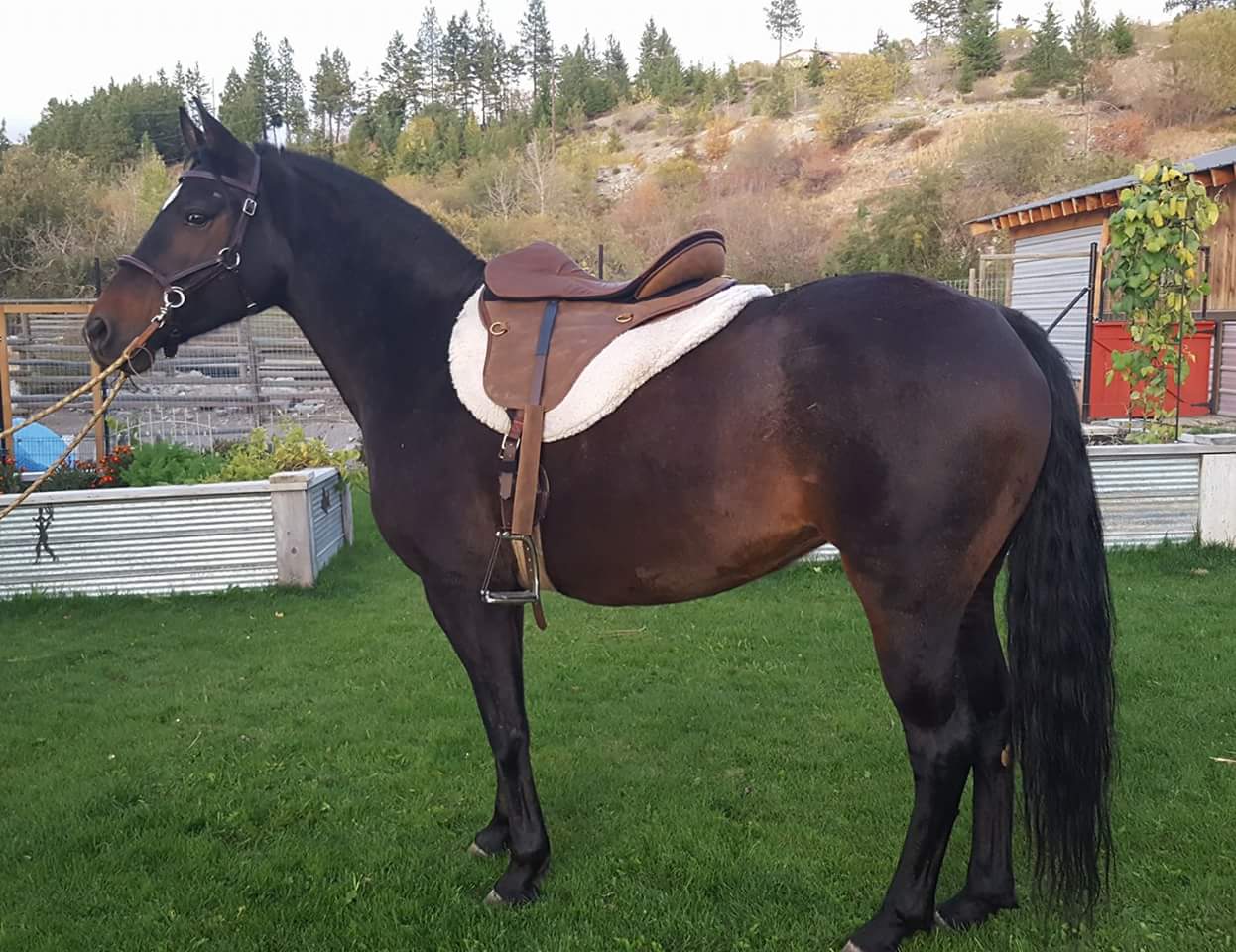By Lisa Houle | August 4, 2023
With rising prices in groceries, it’s more important than ever to protect food security in BC and Canada. Ensuring that crops have the best yields involves preventing the spread of invasive plant species and managing established populations.
But in some cases, invasive plants don’t just threaten crop yields or foraging opportunities, they can be harmful to farm animals. Hoary alyssum (Berteroa incana) is an invasive species that is particularly toxic to horses. When dried, horses find it irresistible.
Dana Johnsen, a rancher from the Penticton area, almost lost a mare a few years ago due to its exposure to Hoary alyssum.
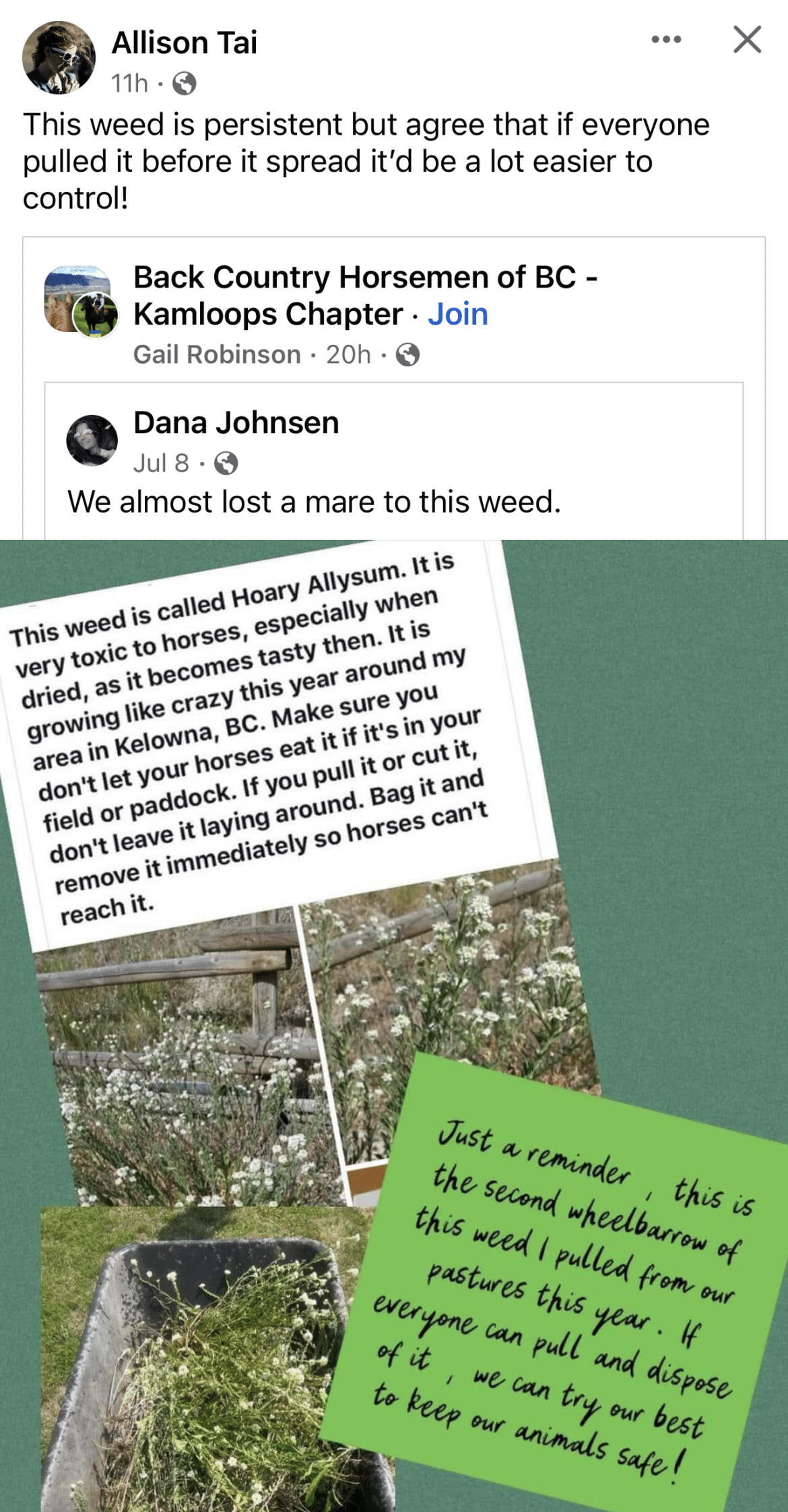
“There was a direct correlation between her consuming the weed and becoming very sick. It was winter and there was no other feed available and no other changes in her daily activity, diet or weather,” she said.
Dana believes the invasive plant was introduced to the area in a load of hay purchased from a supplier. Sharing her experience with us, Dana is hoping to bring awareness so that others may be spared from such a traumatic situation.
“The mare ate all the hay, while my other horses picked through and left the weeds behind. Within 24 hours, she started to get inflamed legs, her eyeballs became very swollen, and the mucous membranes began to bulge out around her eyes. She quickly went downhill with laminitis [a feeling of hot hoof that can cause lameness] and eventually founder [the coffin bone separates from the hoof and rotates, leading to severe pain]. She was not able to get up and stand for almost a week,” said Dana.
“As soon as I could get her to stand up, we took her to the vet where she was treated for pain and inflammation. She was given thyroid medication and antibiotics as her coffin bones were starting to protrude through her soles.”
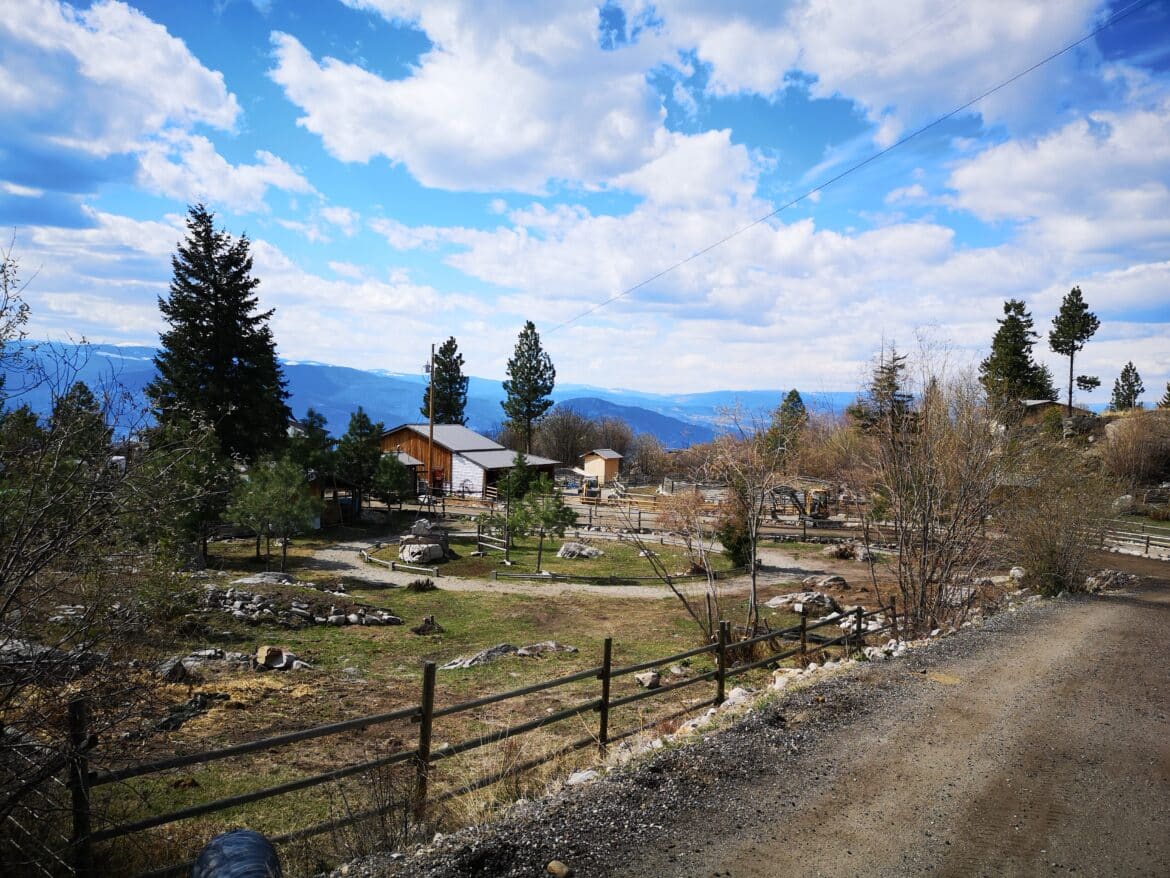
Allison Tai, a rancher from Hope, also has experience with Hoary alyssum. She shares how invasive plants like this affect rural properties. She says she has to remain vigilant, as her horses have been grazing the property for the last four years.
“When we first arrived at our new farm, I was amazed at all the lovely white flowers that filled the fields. Until I looked it up and discovered they were toxic (to animals). We’ve tried all manner of things – sprays, mowing, hand pulling. We’ve settled on hand pulling but it’s really important to get the root. I do all my hand weeding with gloves and a root puller,” said Allison. “It’s also important to bag it since I’ve heard the weeds get sweeter and horses will eat it once it’s been pulled and dried. I’ve had zero success with spraying and mowing, it just seems to make the root systems more robust.”
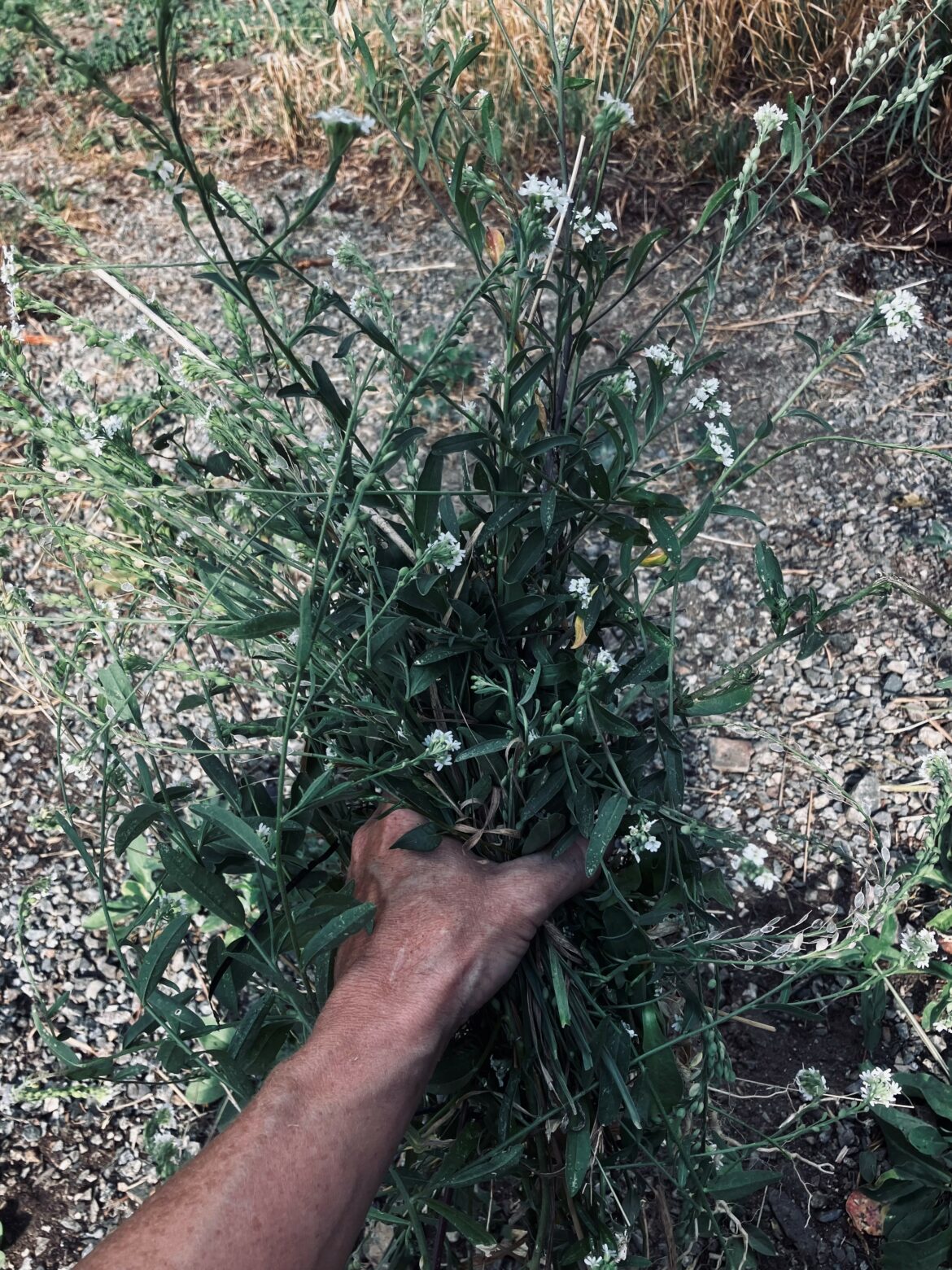
Hoary alyssum is a particularly troublesome invasive species. It is designated a Regional Noxious Weed in the Kootenary Boundary regional district and is currently found in South-Central and Southeastern BC including the Okanagan, Cariboo, Boundary, Thompson, and Kootenay areas.
“Hoary alyssum is so invasive and toxic to livestock that it’s landed on the BC Provincial Priority Invasive Species List. Some of the symptoms in animals that have consumed Hoary alyssum include fever, limb edema (swelling or puffiness in the tissues under the skin), and laminitis – as Dana mentioned. This is not something to take lightly,” said Allison McCabe, Horticulturist and ISCBC’s Senior Lead of Outreach.
“Hoary alyssum seeds can be spread by wildlife and birds – that’s obviously hard to control. But the seeds are also known to be spread by vehicles, equipment, and footwear. Taking measures to avoid spreading Hoary alyssum seeds from one area to another is crucial. If it can’t be brushed off, wash it off. Do not throw Hoary alyssum into the compost. Because Hoary alyssum spreads so easily, make sure to bag the plants, plant parts, and seeds before disposing of in the landfill.”
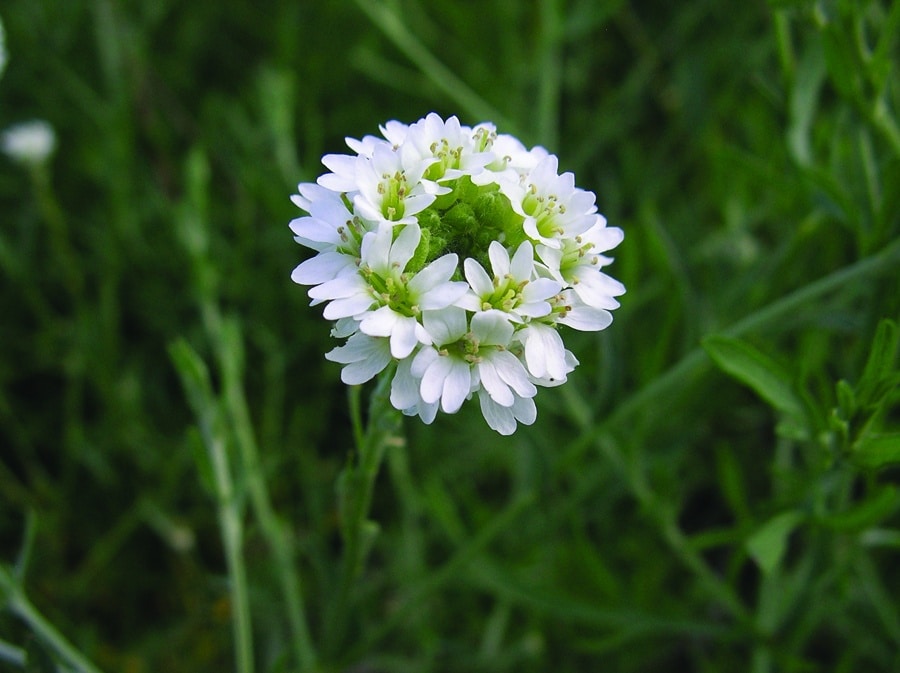
While there are several methods used to control invasive plants – such as biological control (enlisting the help of organisms to eat or infect the target plant), mechanical, cultural, and chemical control – unfortunately there are no organisms to control Hoary alyssum, so the choices are more limited.
“Using mechanical control, mowing Hoary alyssum will reduce seed production. Small populations can be pulled by hand or hoe before the seed sets. Because invasive plants thrive in disturbed soil, once the root is pulled a desirable grass/legume mix should be seeded to occupy that space and to establish competition. For best results, it’s important to carry out follow-up or maintenance management activities throughout the growing season, and in subsequent years for the best control results,“ said Dave Ralph, ISCBC’s Senior Manager of Operations.
“Chemical control can be performed by a certified pesticide applicator following an Integrated Pest Management Plan. There are various herbicides which have shown long term control results. Typically, these applications are most effective in the spring and fall, but applications can also be done in the summer if the plant is green and actively growing. For the most effective control, repeat applications are necessary.”
While Allison Tai has the most success with hand pulling Hoary alyssum, she must commit to pulling it two days a week.
“It’s nearly a full-time job!” she says of the hefty time commitment. “After a good rain in soft soil, it’s pretty easy to remove. However, in a dry spell in hard soil, it can be nearly impossible to get the root out. I’ve made the mistake of pulling a few wayward weeds in dry weather and ripped my hands up for it.”
As for Dana’s mare, the long-term effects from encountering Hoary alyssum continue.
“She developed many issues afterward, such as extreme allergies and skin sensitivities. I had to let her go for free to a new home in Bella Coola, which is a totally different climate and hopefully helps her allergies,” said Dana.
Download the WeedsBMP app to successfully identify and learn how to manage invasive plants to minimize impacts on operations. Early detection and action are critical to stopping the spread of invasive species. Report a noxious weed or invasive plant of concern by downloading the Report InvasivesBC app, report it directly to the BC government, or call 1-888-933-3722.
Lisa is a Communications and Outreach Coordinator at ISCBC. She values a diverse environment and connecting with others about environmental protection. In her spare time Lisa enjoys spending time at the ocean and beach combing for sea glass. You can reach Lisa at lhoule@bcinvasives.ca
Share


